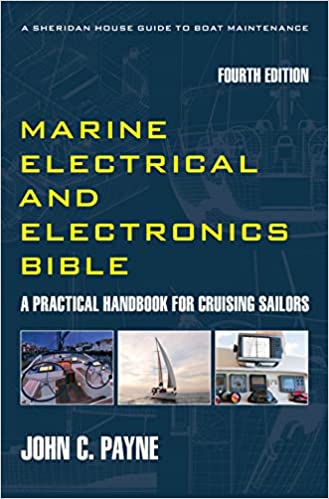About Boat Starter Motors
Part 2 of this 3 Part Series on Boat Starter Motors reliability and installation.
The operation of boat diesel starter motors and the performance depends on many of the circuit elements. A starting system must be viewed as not simply a collection of series connected components, but as a system of several parts.
The typical boat starter motors comprises the DC positive circuit, which includes the battery terminations and connections, and this includes not only the battery terminals but the cable terminations as well. Then there is the battery isolator or changeover switch, the solenoid starter motor connection and solenoid contacts, the starter motor and the various components such as brushes, brush gear, commutator, bearings and the motor windings.
The DC negative circuit, which also includes the battery connections, the engine block which is often part of the return path, the cable back to the battery, and the meter shunt if fitted. Last is the engine control system from the panel which includes the key switch, stop and start buttons, wiring harness, connectors and fuses.
Boat Starter Motors
All elements of that circuit present common single failure points that prevent starter operation, and improperly made and installed cable connections are the most common cause of failure. The most common faults are the accumulation of high resistances, and the resultant excess voltage drops in both the positive and negative circuits. Battery changeover switches are also a major culprit here and I have frequently encountered this, and it pays to have high quality switches. The main starter cables should be rated to have minimal voltage drop at full rated current. In many cases the cables are under rated to save money. When that engine is very cold, along with the lubricating oil, the engine will require maximum power from the starter motor to spin it over as it has to overcome much additional friction loadings.
In addition, the starting motor cables should be kept as short as practicable and as large as possible to also minimize losses and maximize power availability to the starter. This is one extra cost that pays off. As an indication of start current levels, the instantaneous stalled condition short circuit currents can be up to 3500 amps in large engine motor starters before the load drops to a few hundred amps.
Even small values of resistance and voltage drop can have significant effects and reduce or prevent the diesel engine starting. Every single termination and connection needs to be looked at, cleaned and tightened. In many cases poor quality crimping has occurred and also the incorrectly current rated crimp terminals used.
Installation Boat Starter Motors
Boat starter motors installation is generally part of the marine engine manufacturers specification and boat user factors are limited to a few factors only. The first is being mechanically secure, and the second is that the attached cables are of the correct rating, and that the terminal nuts are properly torqued up so that they do not work loose.
Things that are within a persons ability to control are the connection of the negative cable which should be attached as close as practicable to the starter. In most cases it is fastened at the closest engine point, which generally makes a poor contact and inserts resistance into the circuit, as the engine block becomes part of the circuit.
Starter motor design is generally robust as it must withstand the shocks of meshing, constant engine vibration, salt and moisture laden air, water, oil, temperature extremes, and high levels of overload. Not much to ask is it?
Boat Starter Motors
Boat starter motors on boats are by default located low down towards engine bilges, subject to leakages from seawater cooling systems, seawater injection points into exhaust elbows, as well as the unexpected high bilge level. The position generally is out of sight and therefore general inspections are often cursory and inadequate.
Have you ever tried to remove a starter motor? many have not and when they come to that task, they have access issues, tool issues which often require socket wrenches or offset ring wrenches or shorter ones, or combination wrenches. The main lesson is make sure you have the right tools to do this as the time will come when you need to do it quickly.
Boat Starter Motors
Check your engine and check the starter motor, if its leaking oil at the top end then it's probably leaking down over the starter also. Corrosion can be rapid on a starter motor. Another area to check is whether you can physically remove the starter, in many installations this is extraordinarily difficult, with tool access to remove holding bolts nearly impossible. One thing a marine engine manufacturer really considers is access to starters, or not.
A little practice can pay dividends when things go wrong. In addition remove each bolt and apply some thread lubricant such as copper-slip or similar, so that bolts don’t seize in. More about the boat starter motors and also about boat diesel engines.
